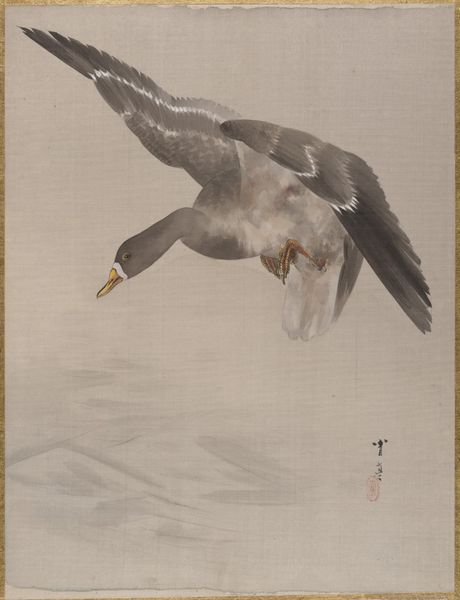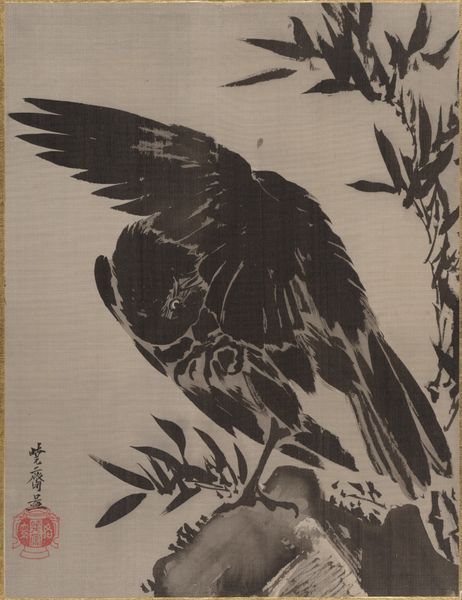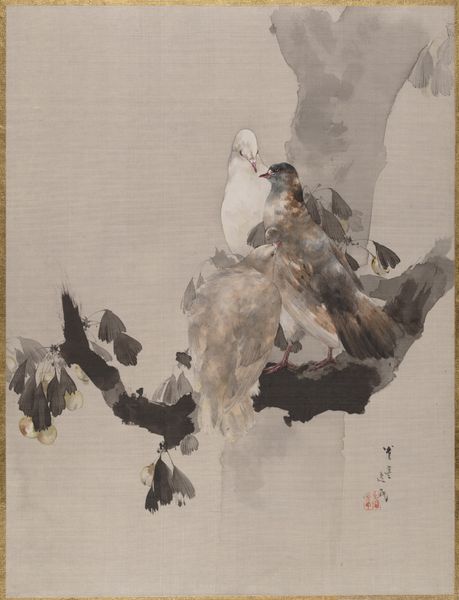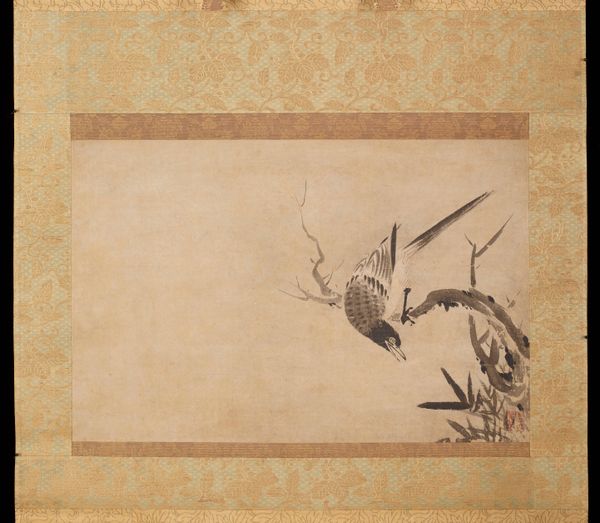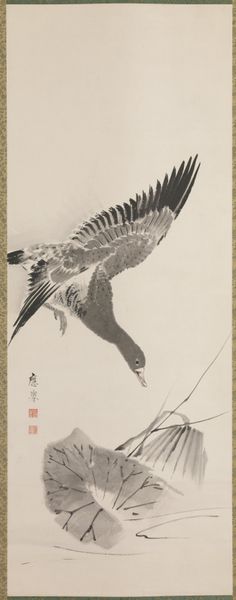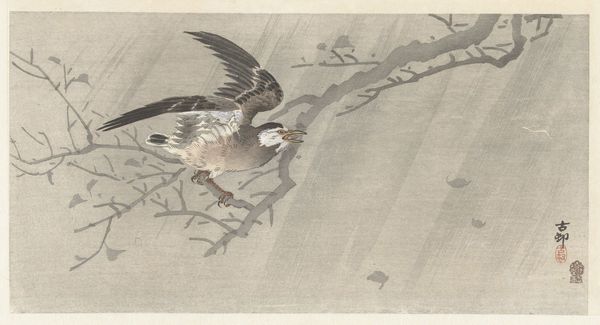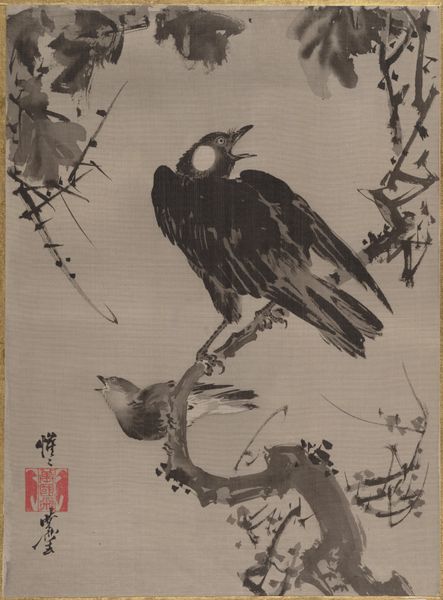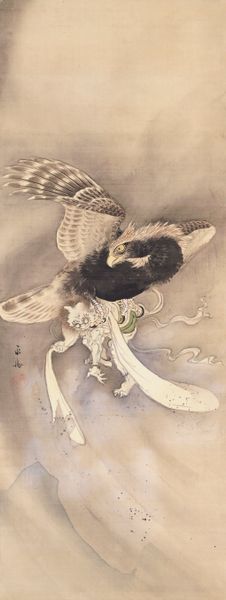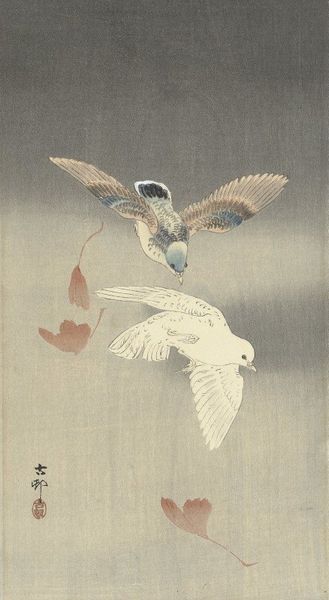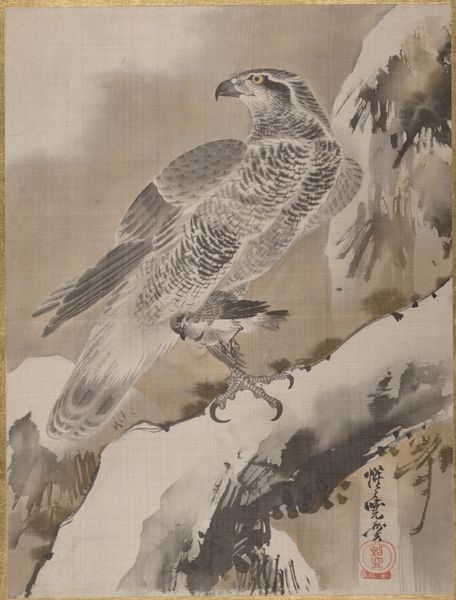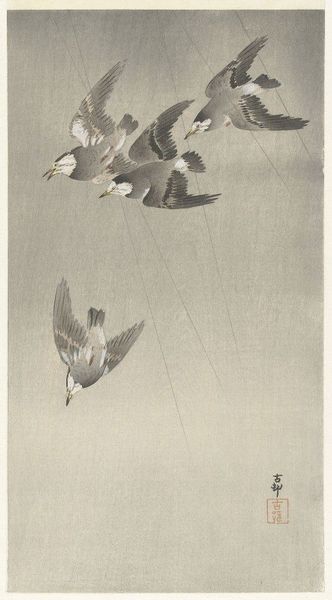
watercolor
#
water colours
#
asian-art
#
landscape
#
bird
#
japan
#
figuration
#
oil painting
#
watercolor
#
24_meiji-period-1868-1912
#
watercolor
Dimensions: 14 5/8 x 11 in. (37.1 x 27.9 cm)
Copyright: Public Domain
Curator: The delicate brushstrokes immediately capture a stark, cold feeling. The gray washes, the texture of the bird’s feathers – it speaks of a fleeting moment. Editor: And that's what Okada Baison excelled at during the Meiji period, wasn’t it? He observed the natural world to mirror societal dynamics through art. Curator: Indeed. This work, “Hawk Holding a Small Bird,” from 1891-1892, now housed at the Met, employs watercolors to depict predation. Tell me, what reads in the work as a possible metaphor for you? Editor: There's an interesting asymmetry to the composition—the soft wash of the background tree in contrast to the very sharp and focused form of the two birds. Is the defenseless little bird a reflection of some of Japan’s anxieties around the industrial push from Western nations? Curator: Possibly. Japan opened its doors, or, we might say, was forced to, during this era. This created complex anxieties regarding the country's future in the face of foreign encroachment, but also an urgent desire to be seen as equally modern. Perhaps the little bird reflects traditional ways vulnerable to the modern hawk. Editor: I find it visually fascinating how the feathers are rendered – layered brushstrokes implying form and texture without overly defining the contours. Note the predator's eyes; Baison expertly used pigment for an intent gaze. It’s powerful. Curator: Precisely! This artwork allows a reading that goes beyond the purely aesthetic and leads us into political and economic discourse from a Japanese view. Editor: The use of watercolor to express the power dynamics and that contrast... it makes one reflect upon vulnerability versus dominance in both nature and societal hierarchies. The grayness overall is not merely a depiction of form, but it may signify a muted, solemn contemplation. Curator: Absolutely. Baison makes us confront these inequalities with elegance, inviting reflection on the delicate balance within societal frameworks and nature. Editor: It reminds us that even seemingly simple, representational works are capable of speaking volumes, once one really starts examining its component forms and composition.
Comments
No comments
Be the first to comment and join the conversation on the ultimate creative platform.
